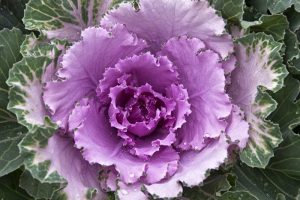Fall Vegetable Guide for Eco-Friendly Gardening
 Even though the temperatures are starting to cool down across most of the country, there is plenty of time to harvest vegetables this fall. Cool season vegetables are primarily grown during the fall season including some warm-season vegetables are mature for harvesting. Similarly to any fall lawn care needs, for growing healthy vegetables, your garden will still need regular maintenance to reuse your garden bed properly from the summer season. Check out this quick guide on when to harvest vegetables in your eco-friendly garden this fall.
Even though the temperatures are starting to cool down across most of the country, there is plenty of time to harvest vegetables this fall. Cool season vegetables are primarily grown during the fall season including some warm-season vegetables are mature for harvesting. Similarly to any fall lawn care needs, for growing healthy vegetables, your garden will still need regular maintenance to reuse your garden bed properly from the summer season. Check out this quick guide on when to harvest vegetables in your eco-friendly garden this fall.
Cool Season Vegetables to Plant
Planting cool season vegetables all depends on your location and when the first frost arrives. Cities in the North may see frosts in the middle of fall while cities in the South may not see their first frost until well into winter.
Cabbage
Known as one of the best producing fall vegetables, cabbage grows exceptionally well during the fall season. You’ll know that they are ready to harvest when the heads are firm. Use them in soups or stews or shred them for a healthy side of coleslaw to a heavy fall dish.
Lettuce
Any kind of leafy green variety is great to plant in the fall. This cool season vegetable loves cooler temperatures and is quick to germinate and harvest. Plant lettuce, arugula, and spinach varieties by seed in order to harvest fresh leafy greens from the garden within a few weeks. Plant rows every week in order to have a continuous harvest of salad for your fall meals. Many leafy green varieties can also withstand a light frost, making it really easy to grow in the fall.
Radish
This popular vegetable is another great option for fall in that it germinates quickly and can be harvested at virtually any size. Grow radishes in the garden next to the lettuce in order to remember to pick them for a fresh salad. Slice radishes thinly in order to not overpower a salad with their zesty and unique flavor.
Carrots
As a root vegetable, carrots can be grown during the fall given their ability to ward off a light frost under the soil. Plant carrot seeds about three months before the first frost in your area to harvest juicy carrots. Keep track of where you planted them and use fencing or other insect repelling plants around it to block off the areas from any wildlife that can reach it.
Warm Season Vegetables to Harvest
These vegetables are going to the ones that you planted earlier this summer. Warm season vegetables need a lot of hot weather as well as room to spread out and grow. Make sure to check these vegetables in your garden in order to harvest them while they are still edible.
Zucchini
This dark green vegetable has most likely been producing for much of the late summer already. However, plants are still going strong into the fall and can produce huge zucchini if you don’t harvest for a few weeks. Make sure to pick zucchini when they are small and firm for less chance of seedy centers. If you do happen to miss one that grows too large, consider shredding the zucchini and freezing it for use in loaves of bread and casseroles this winter. Finding ways to use zucchini, instead of tossing it out, is a great way to use what the environment has provided. The continued blossoms of the zucchini plant also help support local pollinators in your community like butterflies, hummingbirds, and bees throughout the season.
Pumpkin
A fall favorite is harvesting pumpkins that were planted during the summer. Pumpkins are a great decoration but don’t forget that they can also be harvested and eaten. You’ll know that the pumpkin is ripe when it turns the desired color: different pumpkin varieties have different colors at maturity. Cut open pumpkins to use the squash for dinner and bake the seeds for a snack packed with an extra punch of protein. Any decorative pumpkins that get mushy can be thrown in the compost pile or fed to backyard chickens for a tasty treat.
Winter Squash
Another popular fall vegetable is winter squash that can last all throughout the winter season. Butternut and acorn squash are common varieties that should have been planted earlier in the year. Harvest winter squash when they are firm and have turned the right color according to their variety. Use them in soups, stews, and baked goods for a delightfully cozy meal. Process and freeze soups to last you all winter long with the fresh taste of fall.
Fall is a great time to harvest your warm season vegetables as well as grow cool season varieties. Make sure to use all of the produce from your garden and minimize use of harmful lawn care chemicals in an effort to reduce use of harm support the environment. Any scraps can be used in a compost pile or given to livestock as well. Consider all of these vegetables to enjoy this eco-friendly fall gardening season.
Kelly Holland is a gardening and landscape design writer who loves experimenting in her kitchen. Her quirky nature loves a bright color palette so naturally, her coveted garden is covered in a rainbow of fruits, vegetable, and flowers.

